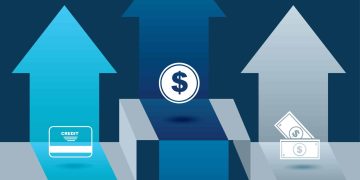Mastercard earnings consumer spending insights explained

Anúncios
Understanding how Mastercard earnings consumer spending trends evolve is crucial for anyone tracking economic confidence and retail performance.
These financial indicators reveal how consumers behave under changing market conditions and offer valuable foresight into shifting spending habits across sectors and regions.
Anúncios
Understanding Mastercard’s Earnings Reports
To interpret market behavior with precision, understanding Mastercard earnings reports is more than just reviewing profit figures — it’s about recognizing how these financial disclosures reflect real-time consumer sentiment.
These reports consolidate spending data across retail, services, travel, and cross-border transactions, allowing analysts and businesses to see where money is flowing, and more importantly, why consumers are choosing certain spending categories over others.
What Mastercard Earnings Really Indicate
- Revenue performance linked to spending volume reveals not only transactional growth but also the intensity of consumer participation in the economy.
- Cross-border transaction data included in Mastercard earnings highlights how travel recovery and international spending contribute to economic resilience.
- Sector-specific performance insights show whether consumers are prioritizing essentials, lifestyle categories, or discretionary experiences — a strong indicator of future market shifts.
Unlike traditional financial reports, Mastercard earnings combine raw financial performance with behavioral insight.
Anúncios
The company’s SpendingPulse methodology, often referenced in financial analysis, tracks both card-based and non-card-based spending to present a broader consumption picture beyond credit card activity alone.
This gives businesses a more reliable outlook compared to limited retail sales data.
Why Mastercard Earnings Matter for Decision-Makers
Investors, retailers, and economic strategists monitor Mastercard earnings because they often reflect consumption trends before official government statistics are released.
When revenue growth and transaction volume rise simultaneously, it typically signals strong consumer confidence.
Conversely, when total spending increases but average transaction size declines, it may suggest cautious spending behavior or a shift toward promotional purchasing patterns.
By understanding Mastercard earnings as a behavioral dataset rather than just a corporate update, stakeholders can identify consumer confidence levels, regional demand surges, and upcoming spending pivots, giving them a strategic lead time to adjust pricing, inventory, and marketing direction.
Trends in Consumer Spending Behavior
To understand where Mastercard earnings are heading, it’s essential to analyze how consumer spending behavior is evolving.
Consumer habits are no longer driven solely by purchasing power — they are shaped by emotional value, digital convenience, and perceived return on lifestyle satisfaction.
This new mindset directly influences transaction patterns reported in Mastercard earnings, helping analysts decode economic sentiment before official financial reports catch up.
Key Shifts Defining Modern Spending Behavior
- Digital-first consumption has become the norm, with consumers shifting from traditional retail to mobile and instant-payment ecosystems.
- Experience-based spending is rising, meaning more people are prioritizing travel, dining, and leisure over material purchases — a trend reflected in categories where Mastercard earnings show steady growth despite inflation.
- Values-driven purchasing is increasing, with consumers supporting brands that reflect sustainability, transparency, and ethical sourcing.
This behavioral shift means that consumers are not necessarily spending less — they are spending with intention, a nuance that becomes clear when analyzing spending categories within Mastercard earnings reports.
Emerging Patterns Guided by Technology and Psychology
Consumers now expect personalized shopping experiences, flexible payment options, and immediate digital confirmations.
The growth of mobile wallet usage and contactless payments, often highlighted in earnings breakdowns, shows how convenience influences real transaction volume.
Analysts note that even during cautious economic periods, digital categories maintain healthy momentum — a reflection of behavioral resilience in Mastercard earnings data.
Younger demographics, especially Gen Z and Millennials, lead these shifts. They tend to delay traditional big-ticket spending but are willing to invest in wellness, entertainment, and travel experiences.
This explains why travel-related transaction data continues to appear strong in Mastercard earnings, even in regions with economic slowdown.
What These Trends Mean for Market Strategy
For businesses and analysts, recognizing these spending patterns allows for more accurate forecasting.
Instead of asking “Are consumers spending more?”, the more relevant Mastercard-style perspective becomes: “What types of spending are consumers protecting, even during uncertainty?”
This understanding forms the foundation for strategic planning, helping brands align their offerings with high-engagement categories that continue to perform well in Mastercard earnings projections.
Impact of economic changes on consumer habits

The impact of economic changes on consumer habits is significant and multifaceted. As the economy fluctuates, it directly influences how people spend their money and make purchasing decisions.
During periods of economic growth, consumer confidence typically rises. Individuals feel secure in their jobs and often increase their spending on discretionary items, such as luxury goods and entertainment.
In contrast, when the economy faces a downturn, many consumers become more cautious. They may prioritize essentials over wants, resulting in a noticeable shift in purchasing behavior.
Factors Influencing Consumer Spending During Economic Changes
Several key factors affect consumer habits during economic fluctuations:
- Employment Rates: Higher employment rates usually correlate with increased spending power. When more people are employed, they tend to spend more on non-essential items.
- Inflation Rates: Rising prices can lead consumers to adjust their purchasing habits. In times of high inflation, many may opt for budget-friendly alternatives.
- Interest Rates: Lower interest rates often encourage consumers to borrow and spend more, while higher rates can lead to decreased borrowing and spending.
- Market Stability: Economic stability encourages consumer confidence, whereas instability often prompts consumers to save rather than spend.
For example, recent global events have led to significant economic changes, prompting many consumers to shift their priorities.
The COVID-19 pandemic caused various shifts, such as a greater focus on online shopping and home entertainment. Many individuals who once dined out regularly began cooking at home, leading to increased spending on groceries.
Understanding how economic changes influence consumer habits is vital for businesses and marketers.
By recognizing these shifts, companies can tailor their products and marketing strategies to align with changing consumer preferences. For instance, brands have adapted by offering more online services and focusing on value-driven products.
Long-Term Effects of Economic Changes
Over time, consistent economic changes can lead to lasting alterations in how consumers behave. For instance, a generation facing economic hardships may develop more frugal spending habits, which could persist even when conditions improve.
This shift in mindset may alter entire market trends as new consumer behaviors take center stage.
By monitoring these impacts, businesses can better prepare for the future and ensure they meet the evolving needs of their customers effectively.
Forecasting future consumer spending
Forecasting future consumer spending is a vital aspect of market analysis. By predicting how consumer behavior may change, businesses can effectively adjust their strategies and product offerings.
One method of forecasting involves analyzing past spending patterns. Trends in consumer spending can often indicate where the market is headed.
For example, if data shows a consistent increase in online shopping, companies can prepare by investing in e-commerce platforms and digital marketing.
Factors Influencing Future Spending Trends
Several important factors will shape how consumers spend their money in the coming years:
- Technological Advancements: As technology continues to evolve, consumers will become more reliant on online platforms for shopping. Innovations like augmented reality may further enhance the shopping experience.
- Economic Conditions: Changes in the economy, such as unemployment rates and inflation, directly impact consumer confidence. A stable economy usually leads to increased spending.
- Demographic Shifts: As different generations come into their own, their spending habits will influence the market. For instance, younger consumers may prioritize sustainability and ethical products.
- Global Events: Unforeseen global events, like pandemics or economic crises, can abruptly change consumer priorities and spending habits. Businesses need to stay agile to adapt to these shifts.
Moreover, surveys and consumer sentiment analysis are valuable tools for forecasting. By gathering data on how consumers feel about the economy, businesses can get a glimpse into future spending.
If consumers feel positive about their financial futures, they are more likely to spend. Conversely, a pessimistic outlook can lead to decreased spending.
As we move forward, brands must remain flexible and ready to adapt their strategies to forecasted trends.
For example, a growing demand for eco-friendly products may prompt companies to align their offerings with sustainability goals. By staying attuned to these shifts, businesses can better meet consumer needs and capture new opportunities.
Utilizing Forecasting Tools
Various tools and techniques are now available for companies to help them forecast spending trends accurately. Data analytics platforms can analyze large sets of data to identify patterns that might go unnoticed.
Additionally, consumer research studies can provide deeper insights into preferences and habits.
Ultimately, understanding how to forecast future consumer spending plays a crucial role in a company’s success.
By anticipating shifts and preparing accordingly, brands can enhance their competitiveness and ensure they are positioned to thrive in an ever-changing market.
How businesses can adapt to spending trends

Understanding how businesses can adapt to spending trends is crucial for staying competitive in the market. As consumer preferences shift, companies need to be proactive in their approach to meet these changes.
One effective strategy is to gather data on consumer behavior. By analyzing purchasing patterns and preferences, businesses can identify emerging trends.
This information helps companies adjust their product lines and marketing strategies to align with what consumers want.
Innovative Marketing Strategies
To keep up with changing spending habits, businesses should consider innovative marketing tactics. Some of these include:
- Personalized Marketing: Tailoring advertisements to individual consumer preferences can increase engagement and sales.
- Social Media Presence: Engaging with customers on platforms like Instagram or Facebook can help brands stay relevant and connect with younger audiences.
- Content Marketing: Providing valuable content that addresses consumers’ needs can attract and retain customers.
- Influencer Partnerships: Collaborating with influencers can help brands reach new demographics and enhance credibility.
Additionally, businesses must remain flexible in their operations. For instance, companies can introduce new payment options, such as mobile wallets or buy-now-pay-later services.
These options cater to consumers’ preferences for convenience and flexibility in how they shop.
Embracing Technology
Adopting new technologies can also enable businesses to adapt to spending trends. Investing in e-commerce platforms allows companies to reach a broader audience.
Furthermore, using data analytics tools can help identify consumer preferences and optimize inventory management.
Moreover, businesses should focus on sustainability, as these values have a growing impact on consumer purchasing decisions.
By offering eco-friendly products and sustainable practices, companies can appeal to conscious consumers who prioritize ethical choices.
Feedback and Customer Engagement
Engaging customers through feedback can offer valuable insights into their spending habits. Implementing surveys, polls, or focus groups allows businesses to gather opinions directly from consumers.
This information can guide decisions regarding product development and marketing approaches.
By being adaptive and responsive, businesses can not only survive but thrive in a shifting marketplace.
Understanding how to pivot quickly to meet changing consumer needs will position companies for success in the long run.
Conclusion: Mastercard Earnings as a Strategic Indicator of Consumer Confidence
The evolving pattern of Mastercard earnings provides more than just corporate profit insight — it acts as a live indicator of how consumers feel about spending in uncertain economic conditions.
When transaction volumes and cross-border payments continue to grow, it signals that consumers are still engaging with discretionary categories such as travel, entertainment, and digital commerce rather than pulling back entirely.
Recent insights from Mastercard SpendingPulse market intelligence highlight that sectors such as travel, dining, and experiences remain resilient, even when inflation impacts retail goods.
This reinforces that Mastercard earnings data is not just a financial metric — it is a pulse check on emotional and lifestyle-driven consumption behavior.
Additionally, industry earnings analysis from Reuters confirms that Mastercard earnings surpassed expectations due to continued strength in digital payment adoption and international spending flows.
This resilience suggests that while consumers may be more selective, they are still willing to spend when value and experience align.
Moving forward, brands, analysts, and investors who monitor Mastercard earnings as a behavioral indicator will gain a competitive edge.
Understanding not just where consumers are spending — but why — is the key to anticipating market shifts, optimizing product strategy, and staying aligned with evolving purchase motivations in a digital-first economy.
FAQ – Frequently Asked Questions about Adapting to Consumer Spending Trends
How can businesses identify emerging spending trends?
Businesses can analyze consumer behavior data, monitor market research, and study past purchasing patterns to identify trends.
What role does technology play in adapting to spending trends?
Technology helps businesses gather data, optimize marketing strategies, and enhance customer engagement through tailored experiences.
Why is customer feedback important for businesses?
Customer feedback provides valuable insights into consumer preferences, helping businesses adjust their offerings and improve satisfaction.
How can businesses implement sustainable practices?
Businesses can focus on eco-friendly products, reduce waste, and adopt sustainable sourcing to appeal to environmentally conscious consumers.





